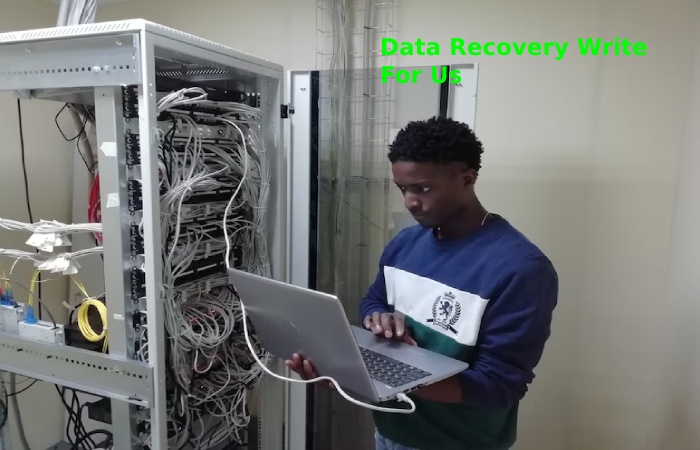Data Recovery Write For Us – Despite the increasing dependability of storing devices, the loss of digital information is still quite common. The most common causes of file loss are human error, software problems (such as computer viruses), power outages, and hardware failures. Fortunately, information stored on a digital medium is almost always retrievable. The following object explains what data recovery is and outlines the most common data loss issues and ways to address them.
What is data recovery?
Data recovery can be apparent as obtaining information from a storage device that cannot be accessed using traditional media due to prior erasure or damage to the device. There are different approaches to recovering lost files, but such recovery is possible only on the condition that the content in question is present somewhere in the storage. For example, restoring a file that has never been written to repository is impossible, such as in case a document was created but ultimately not saved to the hard drive due to a power outage. Likewise, none of the existing restoration methods can help to deal with cases of permanent deletion of files when the space they occupy in the storage is rewritten with other information; in such conditions, the lost files can only be recovered from an external backup.
Data recovery techniques generally fall into two types: software-based and those that involve repairing or replacing damaged hardware components in a lab environment. In most cases, the first approach involves the use of specialized utilities capable of interpreting the logical structure of the affected storage, reading the required data and delivering it to the user in a usable form for subsequent copying. Physical repairs are carried out by specialists in the most severe cases, for example, when some motorized or electrical parts of the device no longer work properly; in this case, all measures are aimed at one-time recovery of critical content without the possibility of continued use of the affected device.
Typical Data Loss Cases
As a rule, the procedure’s success largely depends on the choice of the appropriate recovery method and its timely application. That is why it is very significant to determine the cause of the loss in particular and know what can be done in each case. Otherwise, wrong actions can lead to the irreversible destruction of information.
- Accidental deletion of files or folders
Each file system performs file deletion differently. For example, on Windows, the FAT file system scripts file directory entries as “unused” and destroys information about the file’s allocation (except for the start of the file); on NTFS, only the file entry is clear as “unused”, the record is removed from the directory and the disk interplanetary is also marked as “unused”; most Linux/Unix file systems abolish the file descriptor (information about the file’s location, its type, size, etc.) and mark the disk space as“free”.
The primary purpose of file removal is to free up the storage space occupied by the file to store a new one. For performance reasons, the storage space is not erased immediately, which causes the file’s contents to remain on disk until the space it occupies is reused to save new data.
Data Recovery Write For Us
- File system formatting
File system formatting can initiated by mistake, for example, because of choosing the wrong disk partition or due to storage mishandling (for example, NAS devices often format internal storage after an attempt to reconfigure RAID).
In the process of formatting, empty file system structures created on the storage with subsequent overwriting of all information. If the new and old file system types match, the existing system structures overwritten with new ones; if the types differ, the structs written to different locations so that they can erase the user’s content.
- Logical damage to the file system
Modern file systems are characterized by a high level of protection against internal errors, but they still often remain defenceless against hardware or software failures. Even a tiny piece of incorrect content written to a wrong location in storage can destroy file system structures, broken links of file system objects, and render the system itself unreadable. Sometimes this issue can occur due to power outages or hardware failure.
- Loss of information about a partition
This failure can occur due to a failed “disk” operation or user error, typically resulting in the loss of information about a partition’s location and size.
- Storage device failure
Suppose you suspect a physical problem with the storage (for example, the device does not boot, makes unusual noises, overheats, has problems reading, etc.). In that case, we do not recommend trying to recover data on your own. It would be best if you took him to a specialist.
Suppose a RAID system has failed (single drive failure in RAID 1 or RAID 5, or maximum of two drives fail in RAID 6, etc.). In that case, restoration is possible even without the failed drive since RAID redundancy allows you to recreate the contents of that component.
How does data recovery software work?
The information that remains in intact storage can usually be healthier without professional help using a specialized program. However, it should noted that no data can recovered after it overwritten. For this reason, nothing must written to storage until all necessary files retrieved.
Most data recovery utilities use metadata analysis, the known content recovery method, or both.
Metadata confidential service information that stored in the file system. Its analysis helps to find the main structures in the storage where information about the location of the content of the files, their properties and the directory hierarchy recorded. Once detected, this material processed and used to restore the injured file system. This method is preferable to raw recovery (recovery by known content) because it allows you to get files with their original names, in their native folders, and with the initial date and time stamps. Unless the metadata severely corrupted, it possible to rebuild the entire folder structure, based on the specifics of the mechanisms used by the file system to dispose of items.”
Data Recovery Write For Us
Generally, when the desired result not attained with the help of metadata analysis, the exploration of files by their available content performed. In this case, “known content” does not mean all of the raw content of a file, but only the particular patterns typical of files of the given format that can detected at the twitch or end of the file. These patterns known as “file names” and can used to control if a piece of data in storage belongs to a file of a known type. Files recovered with this method get new names and an extension based on the found signature and assigned to new folders, usually created by the program for files of different types.
Data recovery software can use the described techniques simultaneously to achieve the best results. Other details mainly depend on the type of digital media and can found in the information recovery solutions section.

Likewise, You can submit your articles at contact@technostag.com
How to Submit Your Data Recovery Articles (Data Recovery Write For Us)?
That is to say, To submit your article at www.Technostag.com, mail us at contact@technostag.com.
Why Write for Technostag – Data Recovery Write For Us
 Data Recovery Write For Us
Data Recovery Write For Us
That is to say, here at Technostag, we publish well-researched, informative, and unique articles. In addition, we also cover reports related to the following:
computing
secondary storage
removable media
files
hard disk drives
solid-state drives
USB flash drives
magnetic tapes
CDs
DVDs,
RAID
electronic devices.
file system
mounted
Guidelines of the Article – Data Recovery Write For Us
 Search Terms Related to [Data Recovery Write For Us]
Search Terms Related to [Data Recovery Write For Us]
[write for us websites]
write to us about technology
[write for the security]
write for us business
cloud write for us
[write for us programming]
[write for us CRM]
write for us general
[write for us the accounting]
[write to us about lifestyle]
“write for us” + business
[write for us on social media]
[write a guest post]
[write for us blogging]
[write us news]
[“write for us” + technology]
Related Pages
Gadgets Write For Us
Machine Learning Write For Us
Digital Marketing Write For Us
Anti Virus Write For Us
Gaming Write For Us
Hacking Write For Us
Smartphone Write For Us
Web Design Write For Us
Big Data Write For Us
Cloud Computing Write For Us
Software Write For Us
VoIP Write For Us
Data Center Write For Us
Computer Write For Us
5G Write For Us
CCleaner Write For Us
CRM Write For Us
Analytics Write For Us
Data Science Write For Us
Data Analytics Write For Us
Python Write For Us
Tableau Write For Us
Saas Write For Us
Education Write For Us
